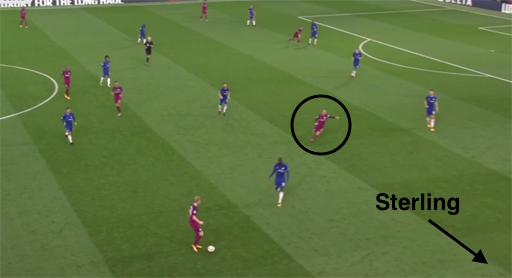WORLD CLASS COACHING
Pep Guardiola Attacking
By Luca Bertolini
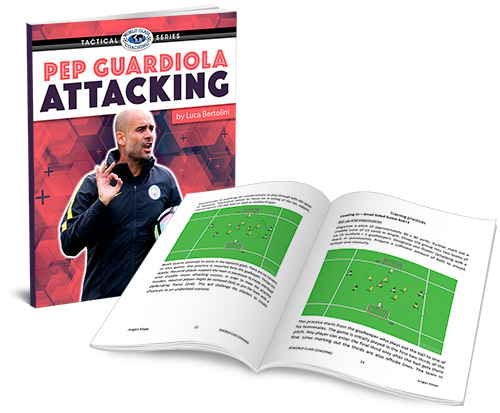
Table of Contents
PART TWO
Formations and Attacking Shapes
Formations and attacking shapes on the field
This is the basic starting line up with the back four (1-4-3-3):
Ederson, Walker, Stones, Otamendi, Delph, De Bruyne, Fernandinho, Silva, Sterling, Aguero, Sané.
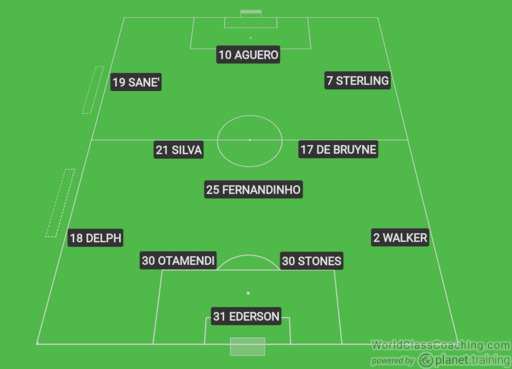
In the second season with Guardiola as manager, Man City has improved the ability to control the game significantly compared to the first one and the ball possession average has been increased as well.
The patterns of play have become natural as well as the flowing from the building up to the final stage, with restricted risks of loss of possession, much less than during the first season, when phases of game control were alternated with moments of suffering without the ball.
The 1-4-3-3 of the City is usually reorganized into a 1-3-2-2-3 to build up, with Walker who joins the center backs on the right, Stones is placed in the middle, Otamendi is on the center-left, to shape the back three line. Delph plays in the middle as inverted fullback, near the balance midfielder Fernandinho.
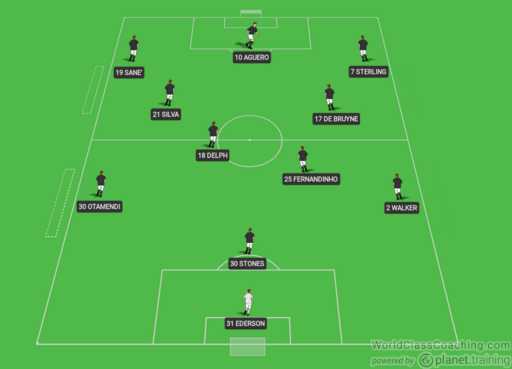
This sort of 1-3-2-2-3 allows to create numerical advantage with the defenders and to have a second option, together with Fernandinho, to advance on the field.
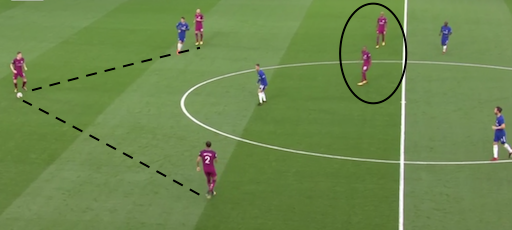
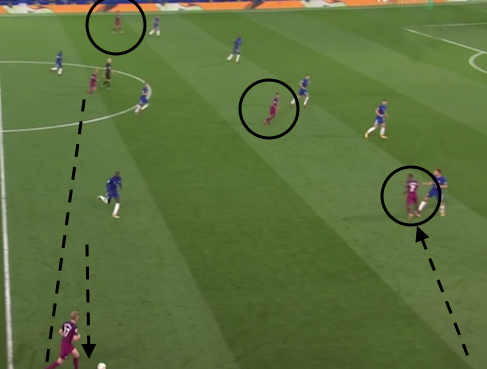
(Gabriel Jesus was the center forward in this Premier League match vs. Chelsea, that was played on September the 30th, 2017).
Wide wingers become very important now, as well as their specific characteristics; Sterling moves without the ball to cut the opposition defense more than Sanè, who usually plays 1 v 1 duels, while dribbling the ball.
David Silva and Kevin De Bruyne are then free to play all around in the middle third, to bring the move to the final finishing stage and supporting the move itself to finish.
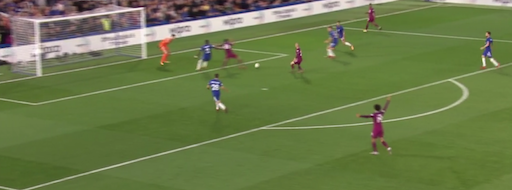
In this first move, David Silva is attacking the penalty area to finish inside the zone, where many of the City moves are usually finished; the so called zones 14 and 17
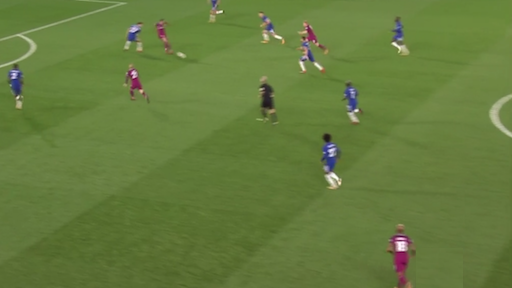
In this second one, the only goal of the match against Chelsea was scored by Kevin De Bruyne inside the zone 14, just outside the penalty area, after a 1-2 combination with the center forward.
(The zone 14:
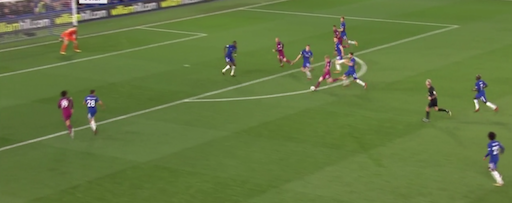
On a pitch which is divided into a six-by-three grid, with a central strip as wide as six yards boxes, there are 18 zones and the specific zone 14, the so called "The Hole" or the "Golden Square", it has been classified as the rectangle that helps teams score more goals. Zone 14 is located in the middle of the pitch, immediately outside the opposition penalty area.
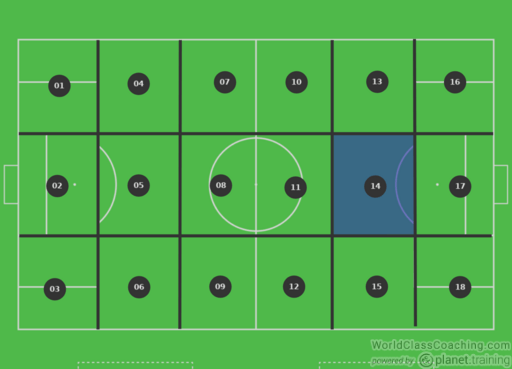
The finishing phase inside the zone 14 must be combined with positive, forward passes and the possession from the back of the field. Wide spaces must be used to move the opposition defense, but to finish just out of the penalty area is a surer way to score goals than by passing into the penalty area from the flanks. It can be another useful solution as quick attacks are key points, but moving the ball wide rather than forward into the penalty area requires more passes and longer time for possession, and the danger of zone 14 could be neutralized.
Crossing can be an effective way to score goals also, but not using short and wide passes from zone 14 and switching the side of play through the whole field, but moving the ball forward down one side to attack the flanks and send cross passes. Zone 14 becomes an area to win the second times of the balls and to win the wandering balls after the rebounds of the opposition defense.
If we look at the principles of play to exploit this area, we can find some of the key factors of Man City:
1) Positive and forward passes
2) Width is useful to move the opponents
3) Finish in front of the goal
4) Do not cross high balls directly from the flanks
5) Find the space between the last defense line and the goalkeeper
6) Pass behind the defense line from the center spaces
7) Counter-press the opposition rebounds
If one or two opposition forwards put pressure, attacking the defender in possession, it’s quite easy to find an option to counteract them and to force the opposition falling back.
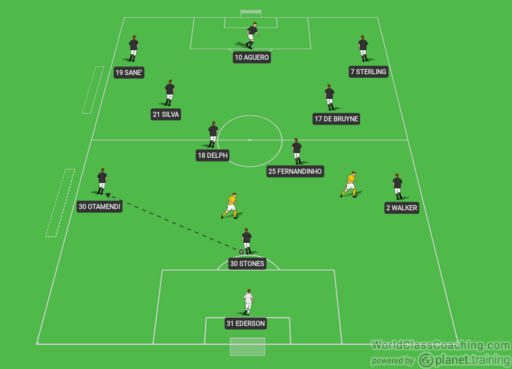
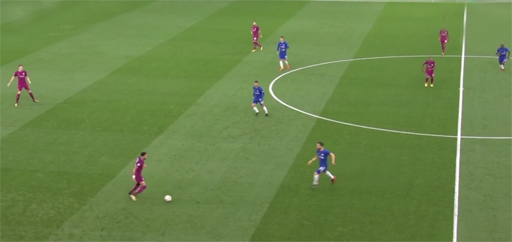
If the pressing forwards are three, the balance midfielder usually drops back to ensure the basic numerical advantage, if the passing lanes toward him are closed.
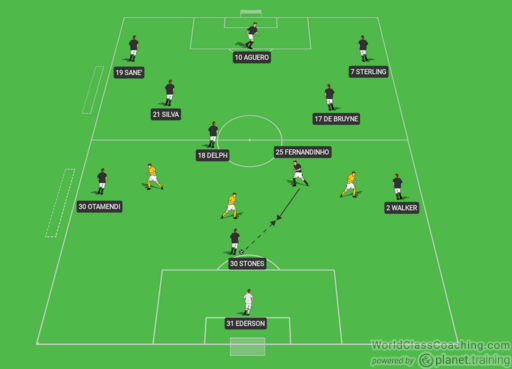
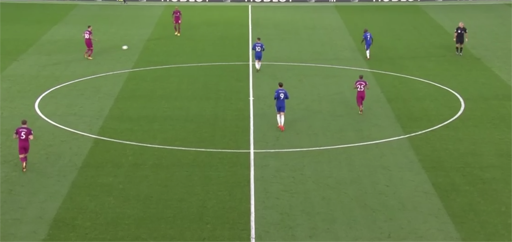
Sometimes even Walker is positioned as an added midfielder when it remained vacant, if the opposite fullback has dribbled the ball up the field. David Silva and De Bruyne are then free to move...
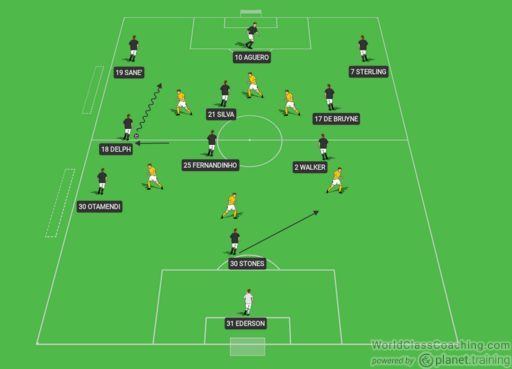
...and be unmarked all over the upper side of the middle third; Sterling and Sanè ensure wide options.
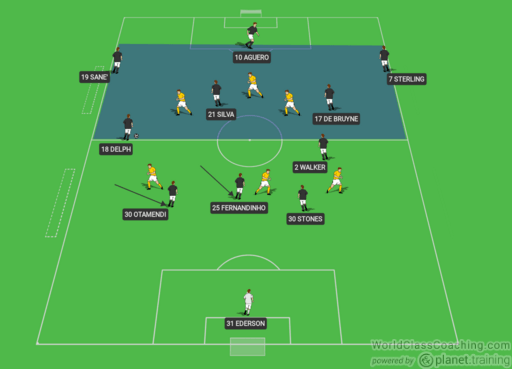
The opposition midfield line must decide to press the center lower midfielders or to save the space where the advanced midfielders can be active. If the pressure timing is not correct, pressing the center lower players means to making the playing out phase easier, to allow the advanced ones playing in between the lines, leaving the defense block alone and the defenders involved in 1 v 1 duels.
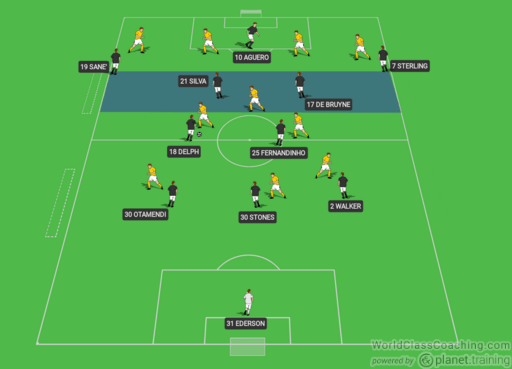
Saving the lower part of the middle third means to let the whole opposition team advancing on the field toward the goal area, increasing the danger of the possession phase.
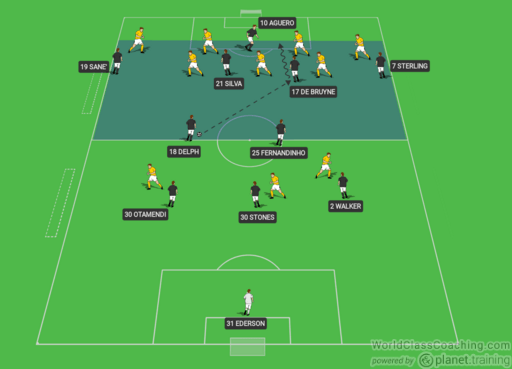
When the pressure timing of the opposition is right during both the phases, the wide players are new options to advance on the field.
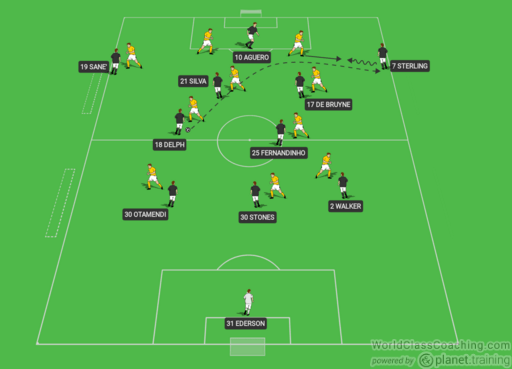
All the opponents, or many of them, are supposed to be placed in the center to equalize the numerical disadvantage, which is the essential prerequisite for pressure; the wide players can now receive having the time to play 1 v 1, at least just after the first touch. The freedom of wide players can be obtained also overloading a flank through low rhythm possession phases.
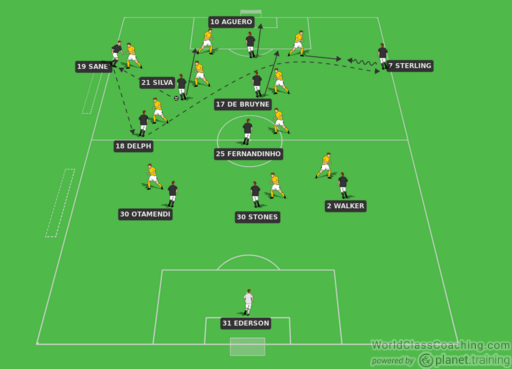
To hit one side Guardiola asks both the advanced midfielders to move wider or through the center space (De Bruyne and Silva) to create numerical advantage with Sterling or Sanè...
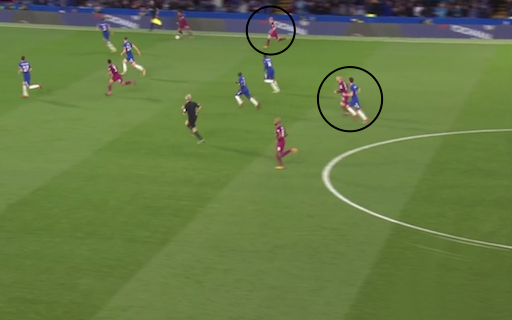
...or to play in between the lines.
